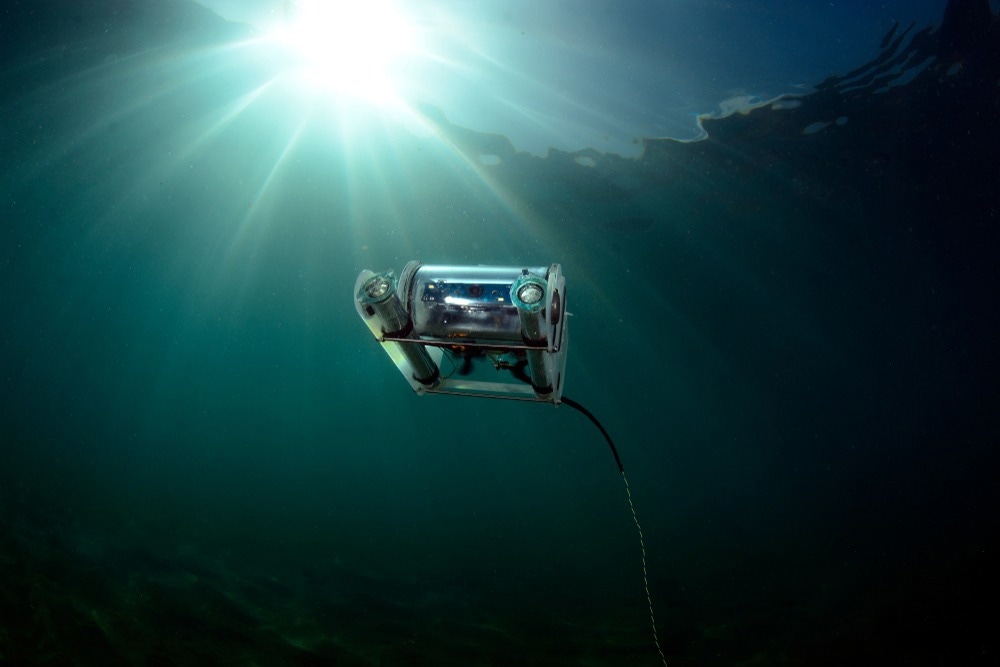Transformation of the food industry
Over the coming years, food production will likely undergo a radical transformation that has been fueled, in part, by the supply chain disruptions caused by the COVID-19 pandemic, although the need for change has been apparent for many years, and transformation is now long overdue.
The world’s food production must double by 2050 if it is to meet the increased demand of the growing population, which is set to reach 10 billion by this time. Hunger affects 1 billion worldwide, and this figure will drastically rise if strategies are not implemented to tackle food insecurity. Additionally, there is an increasingly urgent demand for the agricultural sector to adopt climate-friendly processes, as farming is one of the leading contributors to greenhouse gases.
A solution that could theoretically address both of these important challenges is the adoption of sea farming.

Image Credit: Humberto Ramirez/Shutterstock.com
What is sea farming?
Sea farming, or marine aquaculture, is an agricultural process that has been around for millennia, dating back to before 1,000 BCE in China. Now, it is emerging as a prominent agricultural technique that offers a solution to some of the world’s biggest challenges. The method can provide a reliable source of nutritious food while incurring minimal impact on the ocean and environment if the right strategies are adopted.
As it stands, around 11% of the Earth’s land is currently used for crop production. This represents just 3% of the world’s total surface area. Because the ocean accounts for 70% of the world’s surface area, the option to farm the sea is very alluring in these times due to the increasing competition for land as a result of the rapidly increasing population, rising urbanization, and the increased demand for food that goes alongside this. Sea farming could overtake land farming if adopted sustainably as the main producer of food to feed the world’s growing population.
The shift towards sea farming is facilitated by the advent of revolutionary technologies representing the Fourth Industrial Revolution. New technology such as autonomous machinery, big data, drones, machine learning, satellites, sensors, synthetic biology, underwater robots, and vertical farming are being leveraged to enable the future of sea farming. Here, we focus on the role that underwater robots and drones will play in the sea farming revolution.
The fourth industrial revolution is fueling the next frontier in agriculture
Unmanned aerial vehicles (UAVs), also known as drones, were first invented in 1935, but it wasn’t until Amazon began using them for deliveries in 2013 that they became a household term. Before this time, the use of drones had largely been limited to military operations, with the use of drones for non-military ventures beginning only in 2006.
Drones have become established tools in the agricultural sector, having been leveraged into various applications such as crop spraying and mapping to prevent the excessive use of pesticides and fertilizers. Now, drones are being implemented into sea farming applications to facilitate the shift towards a more sustainable future for agriculture.
Deep Trekker, for example, is an underwater drone that has modernized the operations of fish farms. Its built-in cameras inspect the pens to prevent stock loss through damaged nets. The drone can also remove dead fish and collect water samples for environmental monitoring. In some cases, drones can perform tasks that previously required skilled divers, such as inspecting difficult-to-reach pens, allowing for the continuous monitoring of fish stock.
Another drone developed by Stingray Marine Solutions effectively reduces the sea lice infestations that can devastate salmon farms. The lice-hunting underwater drone has inbuilt cameras that detect the lice and surgical diode lasers capable of killing the lice in 100 milliseconds, delousing the salmon automatically and with minimal human intervention.
The rapid innovation seen for drones in agriculture will likely be seen for drones in sea farming in the next decade.
Robots are also being increasingly used in sea farming. For example, San Diago-based startup Aquaai has developed prototypes of robotic fish that have been tested by Norwegian salmon farm Kvarøy Fiskeoppdrett, which can improve the monitoring of fish size and health. The underwater robots have been tested in extreme weather, proving their ability to reliably swim alongside real fish with the help of their camera and sensors.
Another example of underwater robots benefiting the sea farming sector is the technology created by Aquabyte. The San Francisco/Bergen-based startup is working alongside researchers in Norway and fish farmers to integrate machine learning with underwater robotic technology to evaluate fish, determining numerous aspects of fish health, including size, weight, and presence of lice.
In the next few years, we will likely see more innovations in underwater drone and robot technology that will help to further advance sea farming. These technologies will be fundamental in growing the sea farming sector to respond to the world’s growing demand for food.
Farms under the sea could feed the world in 2050
Further Reading
Last Updated: Nov 4, 2024